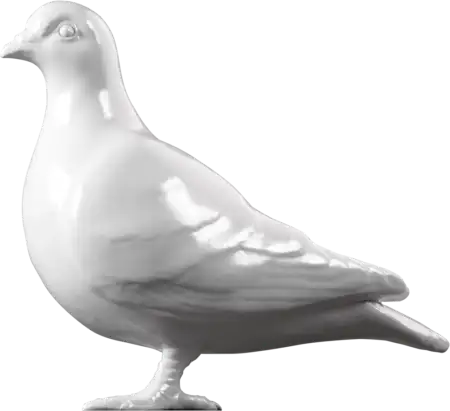Archaeology — Roman; 165-180
Charm, amulet
This thin sheet of lead was rolled up and worn as a charm to protect the wearer, Demetrios, from dying in a pandemic that ravaged much of the Roman Empire in the 160s and 170s CE.
The text, which was scratched in Greek, contains the words of a prayer. It has been translated by Dr Roger Tomlin:
“Send away the discordant clatter of raging plague, air-borne … infiltrating pain, heavy-spiriting, flesh-wasting, melting, from the hollows of the veins. Great Iao, great Sabaoth, protect the bearer. Phoebus of the unshorn hair, archer, drive away the cloud of plague. Iao, God Abrasax, bring help … Lord God, watch over Demetrios.”
Unless he wrote it himself, the charm will have been prepared for Demetrios by a scribe, or possibly by a seller of charms. However, it is unlikely that he brought it with him from Greece. The sheet is an alloy of lead (55%) and tin (45%): metals that were abundant in Britain but – especially in the case of tin – in short supply in the eastern provinces of the Roman Empire. Demetrios may therefore have been a member of a Greek-speaking community in London, rather than a short-term visitor.
The text, a prayer in verse to the god Phoebus Apollo, is in an archaic style that survived in religious ritual, centuries after it was current as a ‘living tongue’. It is written in hexameters, a common metre that goes back to Homer’s Iliad and Odyssey. In those poems, Apollo is often named ‘Phoebus’ (‘Bright One’) and sometimes, as here, described as ‘akersikomes’ (‘with uncut hair’). Greeks and Romans believed that Apollo could protect them from harm. In this prayer, for added protection, Demetrios also calls on Iao, Sabaoth and Abrasax. These names are of Hebrew origin, but they were often used in charms and are unlikely to indicate in themselves that Demetrios had any personal connection with Judaism.
The wording of the prayer gives important clues as to its date. The line “Phoebus of the unshorn hair, archer, drive away the cloud of plague” is a close copy of a ‘magic formula’ devised by a ‘holy man’, Alexander, who was active on the Black Sea coast of Turkey in the late 160s CE. He claimed that if his followers painted his magic words on their houses, they would be protected from the ‘plague’ that was rife at that time.
The pandemic that started in the late 160s – sometimes known as ‘The Antonine Plague’ – was one of the most serious pandemics to afflict the ancient world. The evidence of people such as the statesman and historian Dio Cassius, who lived through it, reveals that it claimed many lives – though we shall never know exactly how many, and how large a proportion of the population. The pandemic originated in the eastern provinces and spread rapidly to Rome and the west. Demetrios’s charm is an important addition to the previously slender evidence that it reached Britain as well.
The descriptions of the symptoms by contemporary observers, such as the Greek doctor Galen, are insufficient for us to diagnose the disease with any certainty. Present-day scholars have largely ruled out a bacterial infection, such as bubonic plague, and think that it was caused by a virus, such as smallpox or, possibly, measles. However, until the aDNA of victims of the Antonine pandemic has been discovered and analysed, we won’t know for sure.
- Category:
- Archaeology
- Object ID:
- VRY89[0]<941>
- Object name:
- charm, amulet
- Artist/Maker:
- —
- Related people:
- Related events:
- Related places:
- Production date:
- Roman; 165-180
- Material:
lead alloy
- Measurements/duration:
- H 132 mm, W 49 mm (overall)
- Part of:
- —
- On display:
- —
- Record quality:
- 100%
- Part of this object:
- —
- Owner Status & Credit:
Archaeological archive
- Copyright holder:
digital image © London Museum
- Image credit:
- —
- Creative commons usage:
- —
- License this image:
To license this image for commercial use, please contact the London Museum Picture Library.

